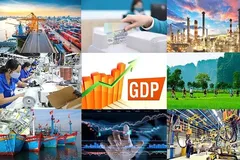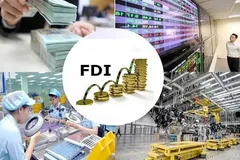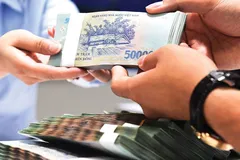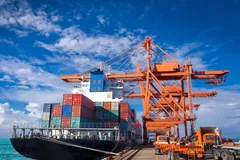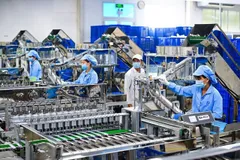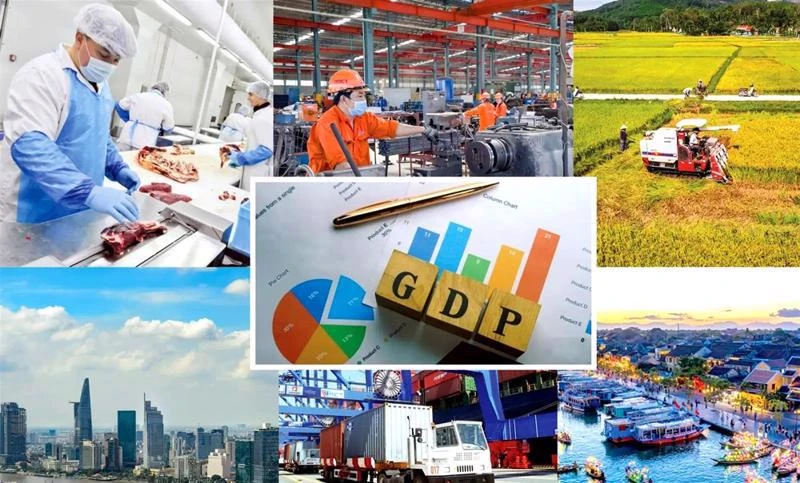
Achieving this goal presents both opportunities and significant challenges. To explore this, Saigon Investment spoke with Associate Professor NGUYỄN HỮU HUÂN from the University of Economics Ho Chi Minh City.
Journalist: - What are your thoughts on the Prime Minister’s directive to aim for a national economic growth rate of over 8% in 2025?
Assoc. Prof. NGUYỄN HỮU HUÂN: - This target is undoubtedly ambitious and will be challenging to achieve, given the current global economic landscape. The global economy is facing numerous uncertainties, and the U.S. Federal Reserve (Fed) has adopted a cautious approach to monetary policy. While many had hoped for aggressive interest rate cuts in 2025, the Fed has announced plans for only two reductions, signaling its commitment to maintaining relatively high rates.
This conservative stance means global economic recovery may remain sluggish, as capital flows will likely continue to favor U.S. investments, strengthening the dollar. A strong dollar often creates headwinds for other economies, including Vietnam.
Another factor to consider is the potential impact of U.S. policies under President Donald Trump, should he return to office. Trump has pledged to impose tariffs on exporting nations, which could significantly affect Vietnam. However, the magnitude of this impact will depend on the specific tariffs applied. For instance, if tariffs on Vietnam are lower than those on countries like China, Mexico, or Canada, Vietnam could benefit by attracting redirected investment flows.
On the flip side, higher tariffs on Vietnam or escalating geopolitical tensions could hinder economic growth. As a highly open economy, Vietnam is particularly vulnerable to global economic fluctuations.
Domestically, weak consumer demand and government austerity measures are additional challenges. Many households are adopting a defensive mindset, saving more amid concerns about job security. This caution dampens consumer spending, which is unlikely to become a major growth driver in the short term.
That said, if exports continue to grow and public investment gains momentum, domestic economic conditions could improve, boosting consumer confidence and spending. However, in an economy heavily reliant on foreign trade and investment, domestic consumption will play a supplementary rather than primary role in driving growth.
With so many variables at play, achieving 7%, let alone 8%, GDP growth will depend on favorable global and domestic conditions.
- There’s been a lot of discussion about fostering new growth drivers alongside traditional ones. What strategies should Vietnam adopt to develop these new drivers?
- Developing new economic growth drivers requires a long-term perspective. We must consider what Vietnam’s economy should look like in five to ten years.
First, we are transitioning from labor-intensive industries to high-tech industries. This shift represents a promising growth driver, but it will take time—likely 5–10 years. For example, transitioning from industries like textiles and footwear to sectors such as artificial intelligence (AI) or semiconductor manufacturing requires significant investment in technology, infrastructure, and workforce training.
Second, structural shifts from agriculture to industry have slowed and, in some cases, even reversed. The migration of workers from rural provinces to urban centers like Ho Chi Minh City is decreasing. Many are choosing to remain in their hometowns or relocate to more affordable industrial hubs like Đồng Nai and Bình Dương. This trend has slowed urbanization and reduced the pace of labor movement from agriculture to industry.
From an economic perspective, agriculture contributes only a small percentage to GDP, while industrial development contributes significantly more, with labor productivity in industry being ten times higher than in agriculture. Currently, about 60% of Vietnam’s workforce is employed in agriculture. If even half of these workers transitioned to industrial roles, it could significantly boost the country’s GDP.
However, industrial development requires space and infrastructure. Vietnam’s current industrial zones are overcrowded, and new high-tech industrial parks are urgently needed, particularly in major cities like Ho Chi Minh City. Planning for new industrial zones with robust infrastructure and connectivity is essential to supporting this transition.
Domestic consumption, while crucial, faces hurdles. Government austerity measures and ongoing administrative streamlining have contributed to a cautious consumer mindset. People are saving more to safeguard against future uncertainties, dampening short-term spending.
Boosting domestic demand requires a multi-faceted approach. When exports thrive, public investment is robust, and economic conditions stabilize, consumer confidence will naturally improve. However, domestic consumption is unlikely to replace exports or public investment as a primary growth pillar in the short term.
Vietnam’s highly open economy means global developments will heavily influence its growth trajectory in 2025. If international conditions are favorable—such as stable trade relations and moderate global recovery—achieving 7–8% growth is feasible. However, adverse scenarios, including higher tariffs, geopolitical instability, or weaker-than-expected global recovery, could derail these ambitions.
Long-term economic sustainability depends on Vietnam’s ability to diversify its growth drivers and reduce reliance on traditional industries. Transitioning to high-tech manufacturing and developing new industrial zones are critical steps. At the same time, fostering innovation, improving workforce skills, and creating favorable investment conditions will position Vietnam for continued success in a rapidly evolving global economy.
The 8% GDP growth target for 2025 is undeniably bold. While challenges abound, so do opportunities. With strategic planning, adaptability, and coordinated efforts from the government, businesses, and citizens, Vietnam can make significant strides toward achieving this ambitious goal.




